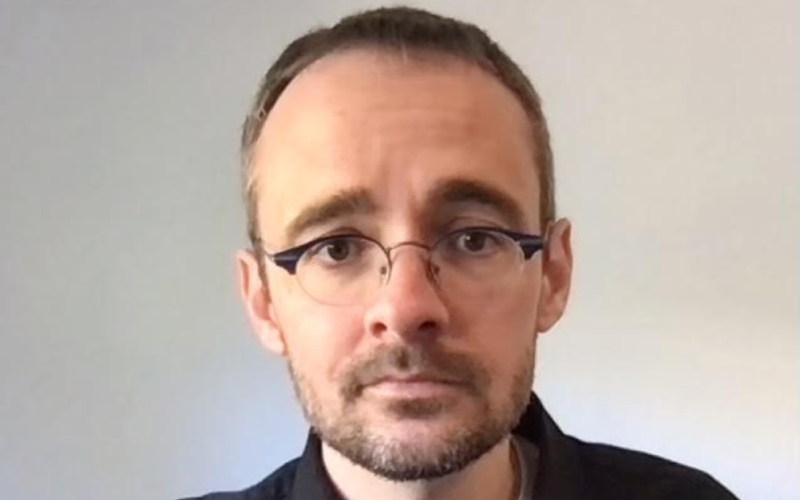“The first line treatment for adolescents with anorexia now is family-based therapy which involves helping the parents facilitate the refeeding of the adolescent. I was working with patients in that way and found it to be helpful and useful but was consistently struck by the neglect of the patient’s inner life. Based on my experience with many patients, that while you could get some symptomatic relief, if you didn’t address the deeper dynamics – the aspects of the patient’s personality organization that drove the disorder – that the patient would snap back to their old behaviors over time. Deeper change and a deeper understanding of what was going on was really necessary. That’s been kind of evolution from my work over the past ten years from my first book, which was about anorexia in males, and tried to present a kind of integrative understanding of that phenomenon. Increasingly over time, I’ve become more and more interested in the deeper kind of analytic thinking that we can bring to bear on this kind of suffering.”

Tom Wooldridge, PsyD
San Francisco
Episode Description:
We begin with a description of the common contertransferential pull to behaviorally intervene when faced with repetitive self-destructive eating disorder symptoms. This intention can inform but not compel the clinical decision about the treatment of choice for someone at any particular moment in their care. These approaches do not, however, give an individual access to their interoceptive life from which these disturbing self-preoccupations emerge. We discuss the challenges of working with those who have limited capacities for mentalisation and as a result, live out their inner lives somatically and motorically. Immersive treatment leads the clinician to experience these proto-affects in one’s own body and in one’s own ruminations. Tom discusses alexithymia, typical family structures, and the presence of the ‘abject’ in the lives of these patients. He presents a case of a patient who was able to analytically work through both the early struggles and later neurotic aspects of these conflicts. We close with his sharing with us his vision for the future which includes more integration between the dynamic and adynamic approaches to these challenging patients.
Our Guest:
Tom Wooldridge, PsyD, is Chair in the Department of Psychology at Golden Gate University as well as a psychoanalyst and board-certified, licensed psychologist. His first book, Understanding Anorexia Nervosa in Males, was published in 2016. His second book, Psychoanalytic Treatment of Eating Disorders: When Words Fail and Bodies Speak, an edited volume in the Relational Perspectives Book Series, was published in 2018. His third book, Eating Disorders (New Introductions to Contemporary Psychoanalysis), was released in 2022. His fourth book, co-edited with Burke, Michaels, and Muhr, is entitled Advancing Psychotherapy for the Next Generation: Rehumanizing Mental Health Policy and Practice. He has also written a novel about the process of psychotherapy, Ghosts of the Unremembered Past, additionally released as an audiobook. He is a Personal and Supervising Analyst at the Psychoanalytic Institute for Northern California and a Training Analyst at the San Francisco Center for Psychoanalysis. He is on the Scientific Advisory Council of the National Eating Disorders Association, Faculty at the Psychoanalytic Institute of Northern California (PINC), the Northern California Society for Psychoanalytic Psychology (NCSPP), the William Alanson White Institute’s Eating Disorders, Compulsions, and Addictions program, and the San Francisco Center for Psychoanalysis, and has a private practice in Berkeley, CA.
Recommended Readings:
Williams, G. (1997). Reflections On Some Dynamics Of Eating Disorders: ‘No Entry’ Defences and Foreign Bodies. International Journal of Psycho-Analysis., 78, 927-941.
Brady, M.T. (2011). Invisibility and insubstantiality in an anorexic adolescent: phenomenology and dynamics. Journal of Child Psychotherapy, 37(1), 3 – 15.
Bromberg, P.M. (2001). Treating patients with symptoms – and symptoms with patients: Reflections on shame, dissociation, and eating disorders. Psychoanalytic Dialogues, 11(6), 891 – 912.
Petrucelli, J. (2015). ‘My body is a cage’: Interfacing interpersonal neurobiology, attachment, affect regulation, self-regulation, and the regulation of relatedness in treatment with patients with eating disorders. In J. Petrucelli (Ed.). Body-states: Interpersonal and relational perspectives on the treatment of eating disorders. (Psychoanalysis in a New Key). New York: Routledge.
Sands, S. (2003). The subjugation of the body in eating disorders: A Particularly female solution. Psychoanalytic Psychology, 20(1), 103 – 116.
Wooldridge, T. (2021). Anorexia nervosa and the paternal function. Journal of the American Psychoanalytic Association, 69(1), 7-32.
Wooldridge, T. (2018). The entropic body: Primitive anxieties and secondary skin formation in anorexia nervosa. Psychoanalytic Dialogues, 28(2), 189 – 202.
